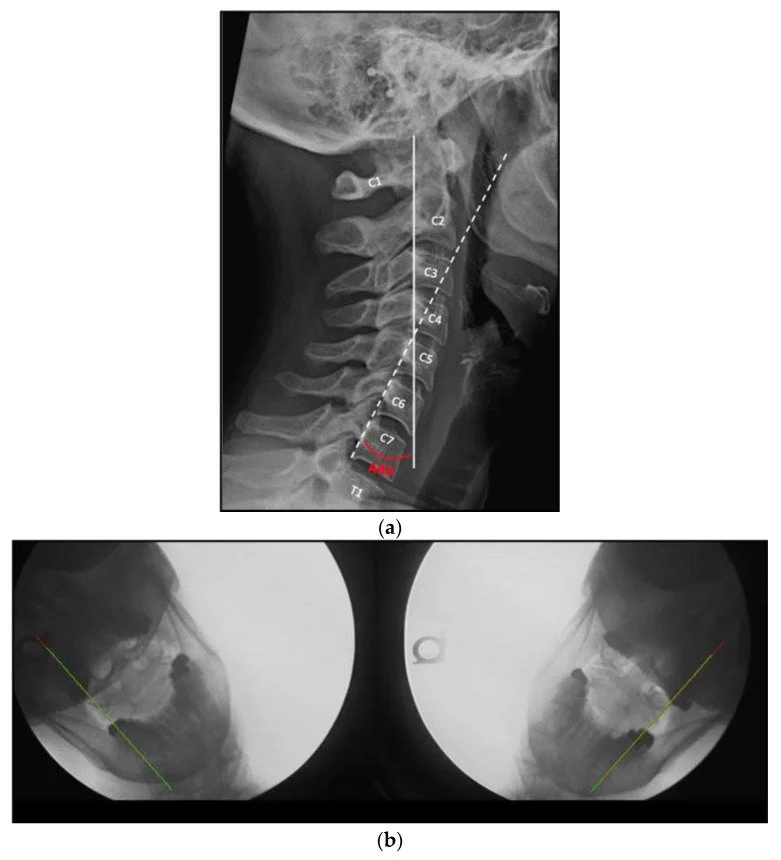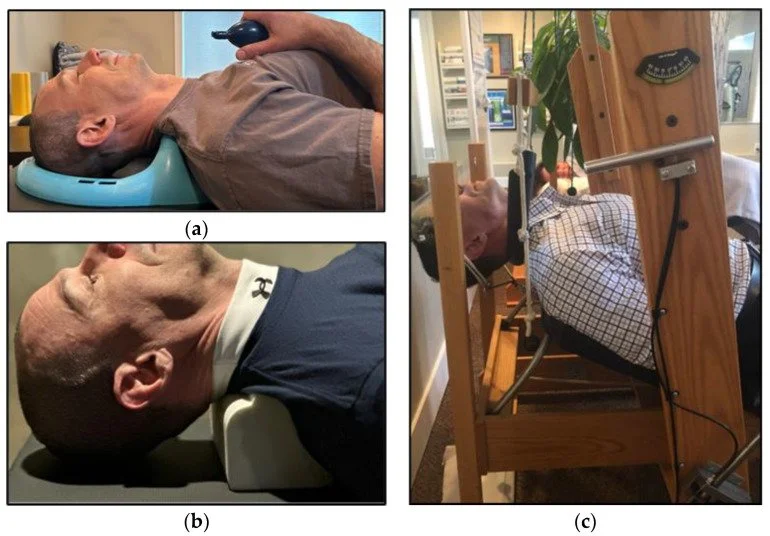Non-Surgical Management of Upper Cervical Instability via Improved Cervical Lordosis: A Case Series of Adult Patients
What the Study Looked At
Upper Cervical Instability (UCIS) happens when the top two vertebrae (C1 & C2) move excessively relative to each other—often following whiplash. In some cases, patients also lose their normal neck curve (cervical lordosis).
The researchers tested whether restoring this neck curve non-surgically could reduce instability and improve symptoms.
Who Was Included
9 adults with both UCIS and reduced/loss of cervical lordosis confirmed via imaging.
What They Did
Each patient underwent chiropractic care focused primarily on restoring cervical lordosis. Methods included posture correction tools like the Denneroll™, posture pump®, and traction.
What Changed
All nine patients showed radiographic improvements—better cervical curve and reduced upper cervical instability (assessed by C1 lateral-mass overhang on C2 during lateral flexion).
Symptoms and functional ability also improved in all cases.
Statistical Findings
Improvement in lordosis correlated with reduced instability. Regression showed R² = 0.46, p = 0.04, meaning about 46% of instability reduction can be statistically associated with curve correction.
Implications for you when you see a Chiropractic Biophysics (CBP) practitioner
Structural correction matters: Even when instability is high, restoring the cervical curve can reduce biomechanical stress at C1–C2.
Non-surgical option: These improvements occurred without surgery. CBP methods can address structural instability through alignment techniques.
Objective markers work: This study used imaging and measurable anatomical markers (lordosis angle, overhang) alongside symptom changes. Good model for tracking progress in CBP.
Clinical relevance: Suggests patients with whiplash-related instability may benefit from early curve correction to prevent chronic dysfunction.
FAQ (Frequently asked Questions)
Q: What is Upper Cervical Instability (UCIS)?
A: It’s when the first two vertebrae in your neck (C1 and C2) move too much relative to each other—often after whiplash-type injuries.
Q: Why does neck curve (lordosis) matter in this?
A: A healthy neck curve helps distribute forces and stabilize joints. Losing that curve can increase strain on the upper cervical area, making instability worse.
Q: Can restoring the curve improve my symptoms?
A: In this study, yes—for all 9 patients involved. Radiographic markers of instability improved, as did symptoms and function.
Q: Is this better than surgery?
A: This study showed significant improvement via non-surgical methods. That offers a lower-risk option, especially for patients preferring conservative care.
Q: How did they measure instability improvement?
A: They measured C1 lateral mass overhang on C2 during side bending. That overhang decreased as lordosis improved.
Q: Does lordosis restoration guarantee symptom relief?
A: Not guaranteed for everyone. This was a small case series. Larger, controlled trials are needed to generalize.
References: Katz EA, Katz SB, Freeman MD. Non-Surgical Management of Upper Cervical Instability via Improved Cervical Lordosis: A Case Series of Adult Patients. J Clin Med. 2023;12(5):1797. Published 2023 Feb 23. doi:10.3390/jcm12051797

